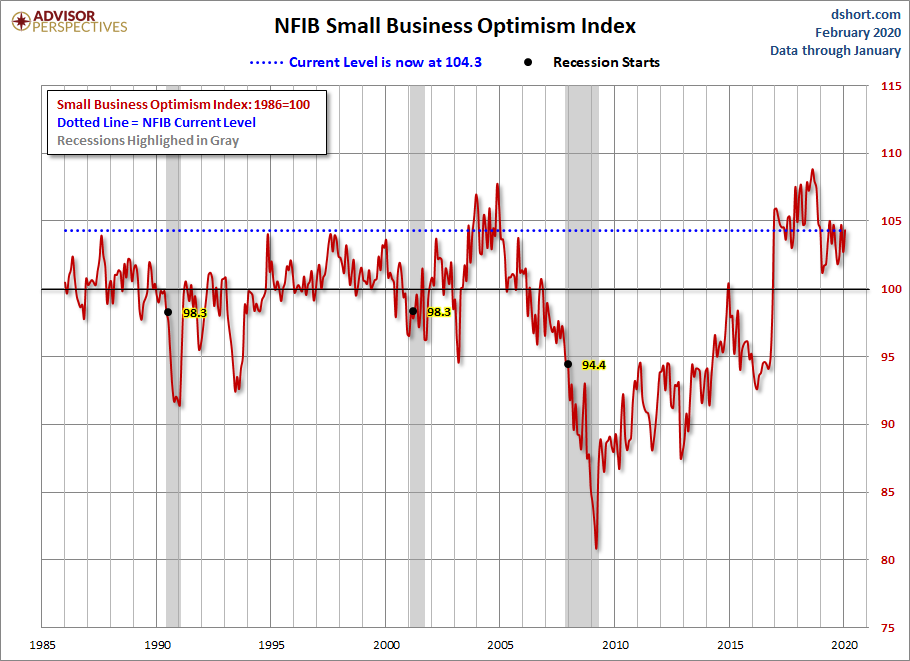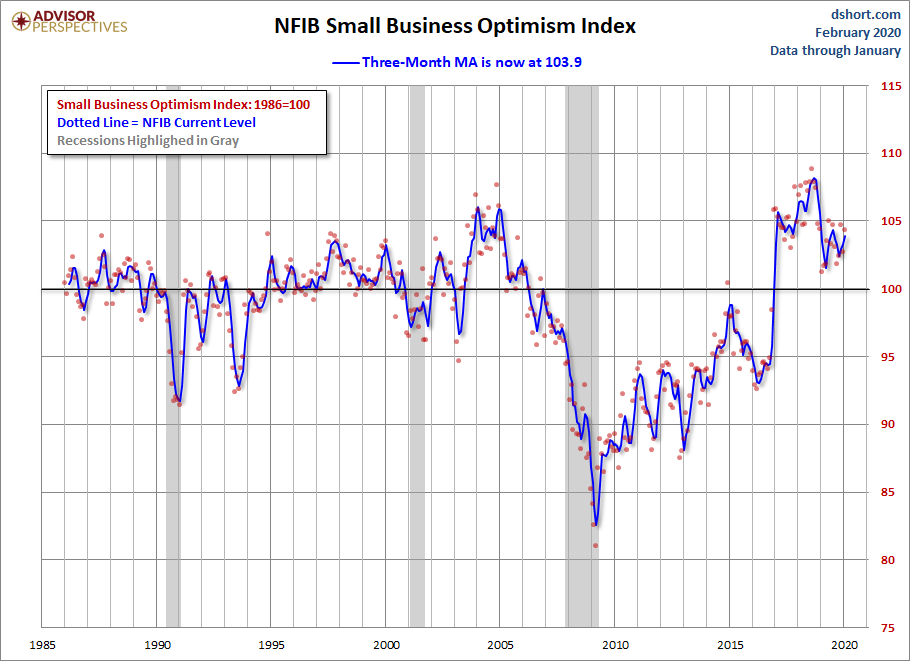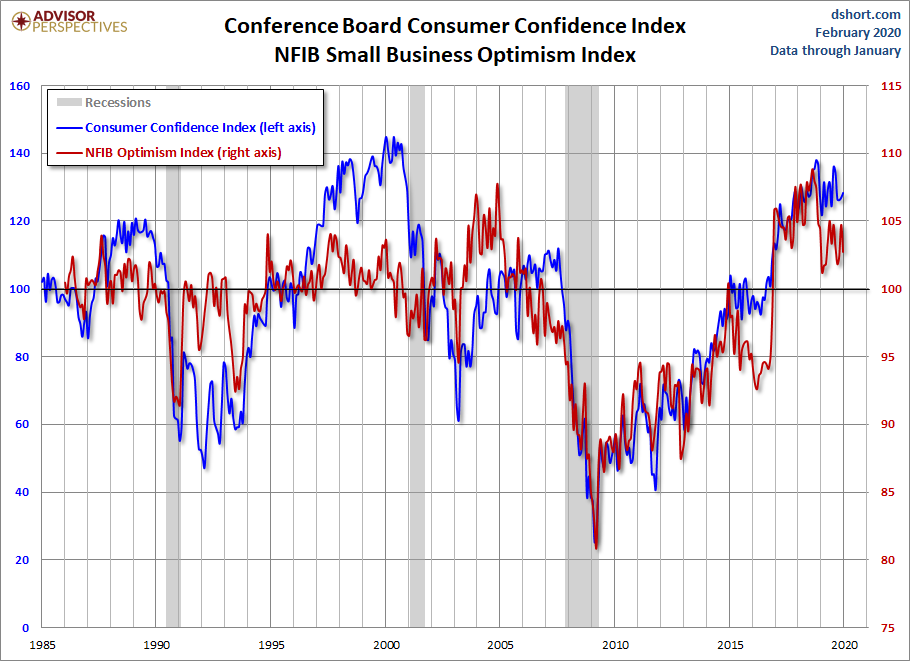NFIB Small Business Survey: Solid Start To 2020
The latest issue of the NFIB Small Business Economic Trends came out this morning. The headline number for January came in at 104.3, up 1.6 from the previous month. The index is at the 91st percentile in this series.
Here is an excerpt from the opening summary of the news release.
The small business Optimism Index started the New Year in the top 10% of all readings in the 46-year history of the survey, rising 1.6 points to 104.3 in the month of January. Six of the 10 Index components improved, two declined, and two were unchanged, with the Uncertainty Index edging up slightly. Owners expecting better business conditions dipped slightly, but sales expectations and earnings trends improved significantly. As was reported last week, actual job creation surged in January.
“2020 is off to an explosive start for the small business economy, with owners expecting increased sales, earnings, and higher wages for employees,” said NFIB Chief Economist William Dunkelberg. “Small businesses continue to build on the solid foundation of supportive federal tax policies and a deregulatory environment that allows owners to put an increased focus on operating and growing their businesses.”
The first chart below highlights the 1986 baseline level of 100 and includes some labels to help us visualize that dramatic change in small-business sentiment that accompanied the Great Financial Crisis. Compare, for example, the relative resilience of the index during the 2000-2003 collapse of the Tech Bubble with the far weaker readings following the Great Recession that ended in June 2009.

Here is a closer look at the indicator since the turn of the century.

The average monthly change in this indicator is 1.3 points. To smooth out the noise of volatility, here is a 3-month moving average of the Optimism Index along with the monthly values, shown as dots.

Here are some excerpts from the report.
Labor Markets
New job creation jumped in January, with an average addition of 0.49 workers per firm, the highest level since March 2019, rebounding back into strong territory. Finding qualified workers remains the top issue for 26 percent reporting this as their number one problem, 1 point below August’s record high.
Inflation
How effective has the Fed's monetary policy been in lifting inflation to its two percent target rate?
The net percent of owners raising average selling prices rose 1 point to a net 15 percent, seasonally adjusted, continuing a measured upward trend since September. Unadjusted, 7 percent (down 3 points) reported lower average selling prices and 21 percent (up 1 point) reported higher average prices. Seasonally adjusted, a net 24 percent plan price hikes (up 4 points).
Credit Markets
Has the Fed's zero interest rate policy and quantitative easing had a positive impact on Small Businesses?
Three percent of owners reported that all their borrowing needs were not satisfied, unchanged and near a record low. Thirty percent reported all credit needs met (up 1 point) and 54 percent said they were not interested in a loan (down 2 points).
NFIB Commentary
This month's "Commentary" section includes the following observations and opinions:
The current Index is in the top 10 percent of all readings in the 46-year history of the survey. A great position for current small business owners and those just getting their business off and running. U.S. GDP averaged a 2.3 percent growth rate in 2019. The unemployment rate remains historically low at 3.6 percent and the labor force participation rate ticked up over the last year 0.2 points, drawing more people off the sidelines with more attractive opportunities and compensation.
Business Optimism and Consumer Confidence
The next chart is an overlay of the Business Optimism Index and the Conference Board Consumer Confidence Index. The consumer measure is the more volatile of the two, so it is plotted on a separate axis to give a better comparison of the two series from the common baseline of 100.

These two measures of mood have been highly correlated since the early days of the Great Recession. The two diverged after their previous interim peaks, but have recently resumed their correlation. A decline in Small Business Sentiment was a long leading indicator for the last two recessions.



